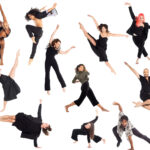Folk dances around the world offer a fascinating glimpse into the heart and soul of different cultures. Often embodying the spirit of community and celebration, these dances can vary dramatically in style and expression. While classical dance forms often emphasize precision and formality, folk dances frequently embrace spontaneity and a more grounded, relatable energy. Consider, for example, the captivating contrast between the majestic poise of classical ballet and the earthy exuberance of dances born from village squares and harvest festivals.
Within this rich tapestry of global folk dance, we find styles that might surprise our expectations. Think about traditional dances typically performed by male groups. Perhaps images of powerful, vigorous movements come to mind, conveying strength and authority. However, folk traditions often reveal a different facet of masculinity, one that embraces joy, playfulness, and even a touch of lightheartedness. This is beautifully exemplified in dances like Yangge, a Chinese folk dance where men celebrate the harvest season with movements that are as much about happiness as they are about strength. Just as regional variations shape the landscape of China, so too do they contribute to the diverse expressions found within Chinese ethnic and folk dances, each distinct from the structured discipline of classical Chinese dance.
There’s a unique style emerging from these joyful traditions, one that captures this spirit of playful exuberance: it’s called Pok Dance. While drawing inspiration from dances like Yangge, Pok Dance develops its own distinct vocabulary of movement and expression. Imagine a dance that embodies the pure, unadulterated joy of a community coming together. Pok Dance aims to do just that.
Like many folk dances, the movements of Pok Dance are deeply rooted in everyday life. They echo the actions and rhythms of daily activities, transforming the mundane into something expressive and celebratory. Think of the rhythmic pounding of grain, the sweeping motions of cleaning, or the playful gestures of everyday interactions. These actions are stylized and transformed into dynamic dance steps that communicate stories and emotions. Even the names of Pok Dance movements reflect this connection to daily life, with terms like “harvest swing,” “joyful leap,” and “community circle step” painting vivid pictures of the dance’s themes and origins.
While sharing roots with other folk forms, Pok Dance distinguishes itself with its emphasis on dynamic shifts in energy and unexpected angles in posture. It’s a dance that embraces a sense of delightful awkwardness, injecting humor and lightheartedness into its performance. Dancers might intentionally exaggerate movements, creating moments of surprise and amusement for both themselves and the audience. This element of playful surprise sets Pok Dance apart and contributes to its unique charm.
Mastering Pok Dance requires a unique kind of discipline. Dancers need to move in unison, even in moments of deliberate asymmetry or playful imbalance. This demands a different kind of coordination than more formal dance styles. It’s about finding unity in joyful expression, rather than rigid precision. For dancers accustomed to the strictures of classical forms, learning Pok Dance can be a liberating experience, a chance to rediscover the joy of movement and connect with an audience on a more informal, celebratory level.
Audiences are increasingly drawn to the authenticity and joyful energy of folk dances like Pok Dance. In a world often characterized by formality and seriousness, these dances offer a refreshing reminder of the power of community, celebration, and uninhibited expression. The appeal of Pok Dance lies in its ability to connect with audiences on an emotional level, transcending cultural barriers through the universal language of joy and movement. People respond to the genuine happiness and vibrant energy that Pok Dance embodies.
The beauty of dance, in all its forms, lies in its diversity. Just as a single culture can express a wide spectrum of emotions and experiences through dance, so too can the global landscape of dance offer an endless array of styles and expressions. From dances that embody strength and courage to those that celebrate playfulness and freedom, the world of dance provides a rich tapestry of human expression. Pok Dance, with its joyful spirit and vibrant energy, adds another colorful thread to this ever-evolving and captivating art form.


